City of Rocks, Idaho
Wow. I don’t recall when we’ve been so pleasantly surprised. This place is just flat gorgeous. It’s like finding a piece of Yosemite, some of the Kern River Canyon mixed in, spread over 22 square miles of hilly high-desert terrain. Small by many standards, the Reserve still has a lot to take in, and we spent several pleasant days there.
While we were in Craters of the Moon (see previous posts), one of the Rangers said he thought we’d enjoy this place. He gave us a brochure, and when we looked at it, we almost skipped the visit. Too small, iffy camp sites, way off the beaten path. But it looked like it might be worth a day’s stay and a photo stop, so we drove on down, about 170 miles from Craters.
You can’t drive past this place, it’s at the junction of pavement and dirt roads. The road which continues onward (into Utah) is graded, but not really RV-friendly, and it doesn’t hit pavement again for almost 50 miles. That’s a LONG way to crawl Howie across washboard and rocks at 5-10mph and 4mpg. So we committed instead to the 30-mile out-and-back excursion south of I-84, and we’re glad of it.
From CRATERS to ROCKS
We ended up going all the whole 170 miles on small highways and back roads. The only time we actually saw I-84 was when we crossed it on SR-25/SR-77 on the way to Albion. It was a lovely, relaxing drive, and we got to see a lot of the Idaho back country and the terrain around that part of the Snake River Valley. The countryside varies widely, from open, wild desert plain to green/brown agricultural fields.
As we left Craters, the famous (infamous?) Snake Valley fog closed down on us. We had to slow to 30mph at times.
Then the fog lifted and broke up, and the sun hit the dark plowed fields and steamed them up into the lightening skies. Very pretty.
Further south, we started to get a peak under the overcast at the distant sunshine, and the far-distant hills at the southern edge of the valley.
Entertainingly, our journey happened to coincide with the sugar-beet harvest (October), and the sights and scenes, while probably unremarkable to locals, were unique to us. Huge expanses of fields of beets, all in different states of growth or being dug up, were being attacked by massive farming machinery. Harvesters filled up huge dump trucks, which barged out of the fields, scattering piles of mud along the narrow two-lane roads. While we tried to dodge the mud, we watched the trucks get weighed, and then dump their loads into piles, to be scooped up and conveyed onto higher piles, and sometimes into massive silo complexes.
Some brief reading revealed that the sugar industry is under attack, both from a nutritional standpoint (our society consumes WAY too much sugar), and also from pricing sags (40% down in recent harvests). It’s sad, because beet sugar is certainly more healthy than HFCS (corn syrup). But maybe that’s why the prices are low. In any case, it’s not clear what the future holds for Idaho sugar farming. But we were lucky to get a snapshot of it. The harvest typically only lasts a couple of weeks.
As SR-25 turned into SR-77, we crossed the big Snake. It’s so large here that even my 27mm wide-angle couldn’t take it all in.
Soon, we were leaving the flat farm lands for the rising mountains that flank Idaho’s southern border.
SR-77 continued to take us deep into the high country, across a broad valley north of Almo – – –
– – – to find ourselves on a little-known scenic byway.
As we approached Almo, the granite namesakes for the area started to come into view. We were instantly struck by the beauty of the outcroppings. Perhaps it was due in part to their stark contrast to the plainness of the desert vegetation, but they are really quite a standout appearance. This is a shot of the foothills of Castle Rocks State Park, just a bit north of the City of Rocks National Reserve.
But there’s only a glimpse available from the pavement. To get to the real deal, dirt is the only choice.
We investigated the Smokey Mountain campground on our way in. It’s a full-hookup RV park just outside the Reserve, and very easy to get to. But the Reserve road looked good, so we chanced going in and maybe having to come right back out (due to Howie’s limitations). The distant formations certainly looked appealing, and the idea of camping among them was very attractive…
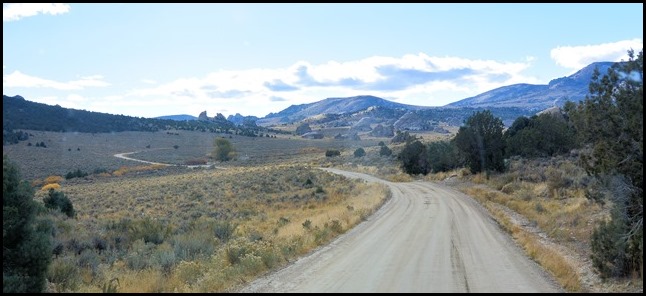
Here is a view of the hills that flanked the road into our campsite.
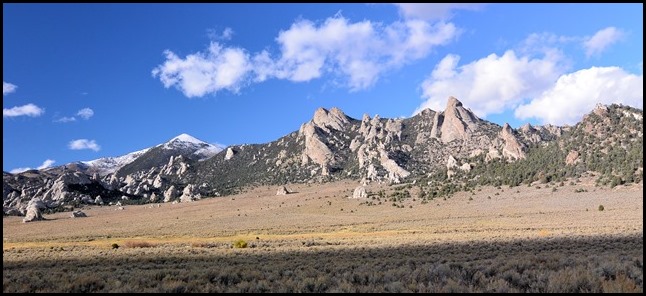
Well, it turned out to be a great decision. We found an easy, Howie-friendly camp site (#7), with fantastic views of surrounding formations. A literally postcard-perfect place to stay for a few days, and marvel at the stuff around us.
Just above our camp site (from where the above picture was shot) is a huge boulder with a grand view of the valley below, and a tiny granite aquarium on top. Or is it a tidepool? Bathtub? Swimming hole.
We settled into camp for several days and some very fine times.
ROCKS
Granite is the materials that the “rocks” are made of, and as with granite everywhere, it’s beautiful, impressive, imposing, and seemingly eternal. Of course, it’s not eternal or we wouldn’t be seeing the wondrous weathered forms of it – – but from a human perspective, it’s eternal enough.
As we drove around and hiked around, the “artwork” of nature was everywhere to be found.
CLIMBING
We are hikers, but not climbers. We will tackle gnarly footing and steep slopes, but we don’t use pitons or shackles to get to where we’re going. But here at City of Rocks, we seemed to have stumbled into a climbers’ Mecca. Folks with hard-helmets, carabiners, harnesses, and Volkswagen-sized bundles of rope were everywhere, trying their craft on the cliffs. There is every imaginable variation of climb available, from “bunny slopes” to 200-foot vertical walls, clefts, overhangs, and so on. We weren’t tempted to try it out (well, not really tempted anyway), but we had a lot of fun watching those who did. My 810mm lens once again came in handy.
[EDIT: we found out from some additional reading that this place is considered “everyman’s” medium-climb destination. There are tons of articles on the climbing websites about CoR.]
Look carefully – – there’s a little human ant on the upper-left peak:
Zoomed in slightly – – –
And up close and personal – – –
Later, across from camp one evening, we had armchair seating for these folks, about 300 yards away:
It wasn’t all just balls-of-steel climbers though. Right across from our camp site, this little baby rock had a class of enthusiastic climbing students on it almost every day. From young to old, they all would give it a try, laughing and hooting and hollering (the little ones sometimes crying) and mostly having a pretty good time.
There was more than just climbing going on. One afternoon, we heard some bawling of cattle, and looked out the window to see a herd being driven south down the campsite access road. Real cowboys and all – – don’t let the baseball cap fool you. They worked about 50-60 head past us for a little while and disappeared around the bend.
This robin was having just as good a time as I was, watching all the activity.
DRIVING and HIKING
The Reserve has “only” 22 miles of trails, but those trails tend to be roller-coaster tracks, heading steeply up and down the rugged terrain. We took a tiny little loop out of camp one day, less than two miles, and it had more than 600 feet of elevation change down and up. So it could take duffers like us several days to explore most of the trails.
But wait, there’s more :o) beyond the confines of the Reserve, trails go on for miles and miles, including the famous California Trail of westward-migration days. The California Trail goes right through the southern portion of the Reserve, and there are many placards with comments, notes, and journal entries from when the settlers came through the area. So, inside and outside the Reserve, there is really as much hiking as anyone has time and interest in.
In addition to hiking, there are scores of miles of roads that go through the Reserve, or through the nearby State Park and National Forest and BLM areas.
One day, we took a big driving loop, up northwest through Oakley, across east through the forest, and back south down through Almo, for a grand tour of the area. Another day, we went south past Twin Sisters and got even further into the back country. By “stretching our legs”, so to speak, we got to see even more than the marvelous rocks, and we even got right onto the actual original California Trail for a little ways.
Hiking the Boxtop Trail, late afternoon.
Looking straight up a vertical cliff face along the trail.
Different kind of “cliff face” altogether. Just in time for Halloween.
Nicely-done trail construction. Those stones probably weigh 300 pounds each.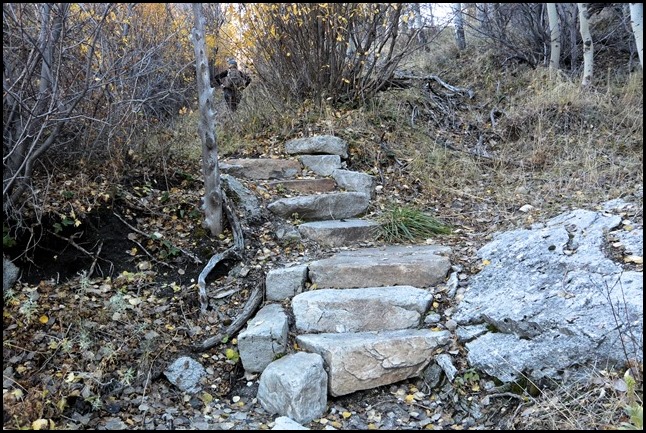
Crossing the creek would be impossible without the cleared trail. Literally impenetrable willow thickets.
The Fall-golden riparian ribbon in the valley below the trail – – –
– – – and the miniscule stream which supports it. Literally one step wide.
Our south-bound drive took us past some old farm machinery, a disker-seeder from long ago – – –
– – – when we lifted up the lid to look inside, I almost had a heart attack as a small cottontail shot out from under my hands. Later (after Karin applied the defibrillator) I managed to get a snapshot of the rabbit. He was pretty scared too.
Once again, Karin’s shotgun-rider duties involved messing with a seemingly endless series of cattle gates.
I love these California Trail markers. They’re legible, weatherproof, and bulletproof. In fact, I think they might even scatter bullet fragments back into the vandals who shoot at such things. Good design.
The old Trail still has some remnants hanging on, like this old stage-stop building. Wooden stuff is pretty much gone, but stone structures last a lot longer.
Most of the old California Trail is no longer in use, bypassed by different roads and paths for various reasons. The only users of the Trail, for the most part, are infrequent explorers like us. So the track is not well-worn, and sometimes goes through major or minor obstacles. This little stream crossing was only 6″ deep in mud, but that was enough to need a little boost from 4WD to get through the short stretch.
In another place, the old track is pretty much invisible altogether. Only the signs and markers indicate its presence.
Out on the plains, a band of 30-40 antelope rocketed past about 200 yards away. Did you know this is the fastest land mammal besides the cheetah? They clock 55mph in broken country that you have to watch your step to walk in.
Farther to the east of the Reserve entrance road (and Smokey Mountain RV park), a plain and lonely “RV park” hangs just off the side of Elba-Almo road (aka SR-77, aka Lynn Road). No frills, no hookups, no water or restrooms or trash dump. Just flat spots, $10/night if you please. It doesn’t seem like a great deal, but if all the Reserve camps are taken, this is the cheapest place to roost.
Farm folk aren’t typically lavish, and will tend to make use of just about anything remotely serviceable. Someone found a purpose for this old military 6×6, parked here next to some old harvesting hardware. This is probably WW2 vintage – – and it sure would be fun to drive.
On a different day, we did the northbound drive (through Oakley), which provided a totally different scenic series. Going over the first major pass (leaving the Reserve), we saw this beautiful hunters’ camp, with a panoramic view (to the right) all the way out to I-84, 25 miles away.
We drove up the valley, widening out into the farming flatlands, and reaching the tiny burg of Oakley. We picked up some groceries and then made a right turn to head directly east across the local section of the Sawtooth National Forest (there are many pieces of this forest scattered around Idaho).
On the way into the foothills, we passed a hillside with some domestic horses on it. This one seemed to be laughing at us, no idea why. Maybe he/she thought Ralph looked funny.
Then we started climbing, up a steep switchback that afforded us a grand view of the valley we left behind. Oakley is at the upper left, just below the hills.
The road climbed up past the snow line – – –
– – – and then followed the golden foliage along the stream, into the next valley to the east.
It was an excellent, easy Fall road – – –
– – – and we came out on the eastern side to the broad grazing country north of Almo.
It was a really pleasant drive. There was not a lot of breath-taking scenery, just a long, peaceful and soothing tour across the mountains and through the countryside. We’d do it again any day.
On a school-holiday weekend in October, we were slightly surprised to see every Reserve campsite full. In fact, we could hear night-time late arrivals coming and going, searching for vacancies. It might seem like a crowded place, especially in comparison to some of the deep-lonely places we’ve camped.
But the sites are widely spaced, with plenty of elbow room, and we were pleasantly surprised to NOT hear a single generator going. Not to say one wasn’t running somewhere, but we didn’t hear it. The lumpy terrain really seems to break up any noise very effectively. Also, with lots of daytime exercise, early sunsets, and cool evenings, people seemed to settle in pretty early.
It was a grand, peaceful time, and we’ll come back again – – maybe in the Spring for the green growth and wildflowers. That should be close to spectacular.
[EDIT: After posting this, we found out that “in season” camping at City of Rocks is reservation-intensive. You cannot stay non-reserved for more than one night. I suspect the place stays pretty full for the summer.]
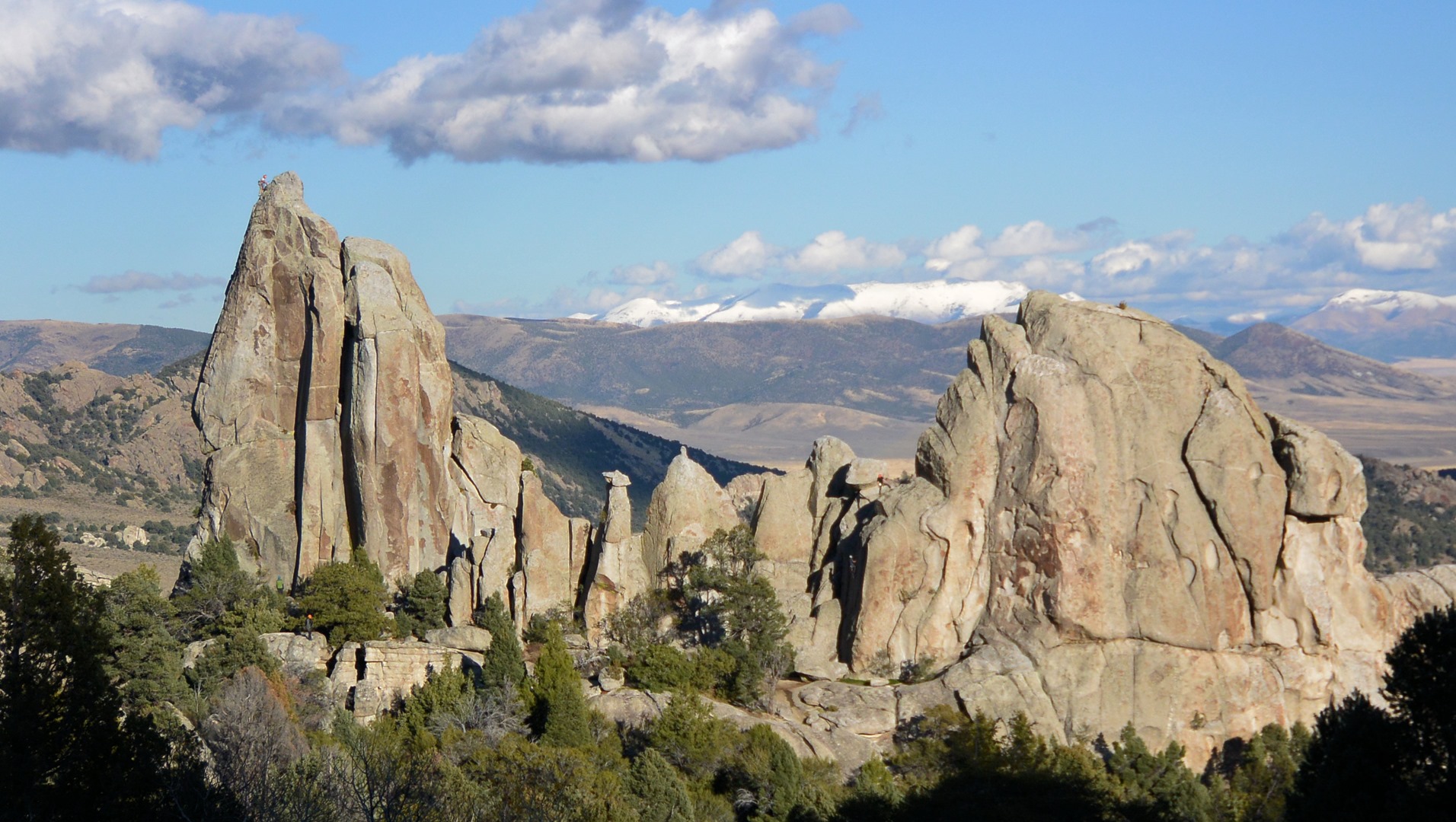
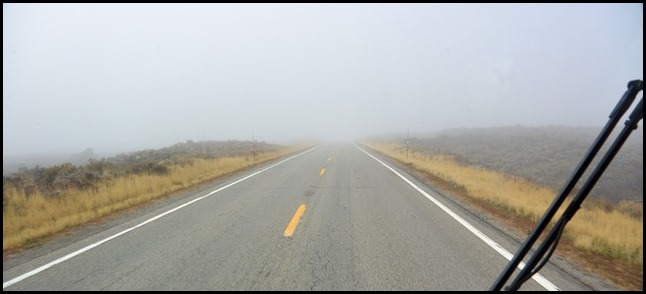
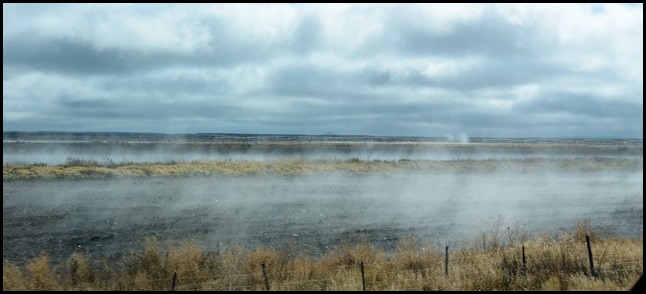
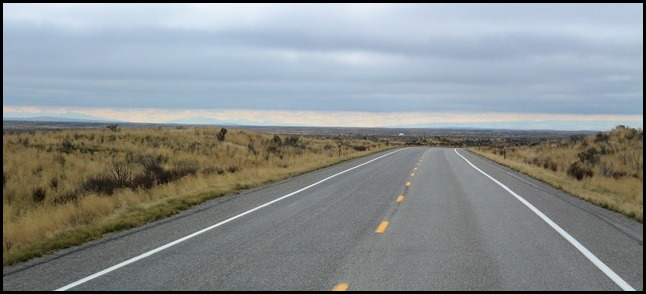
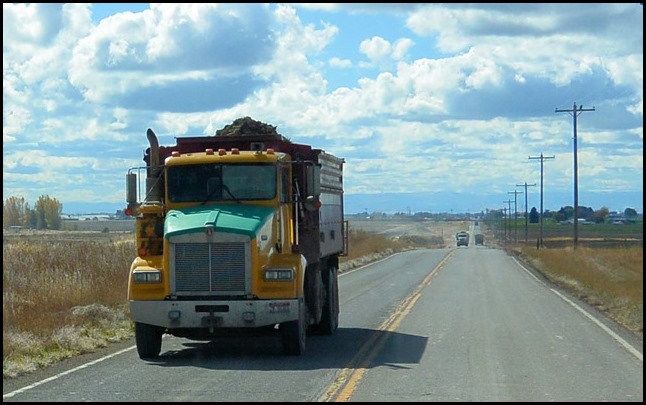
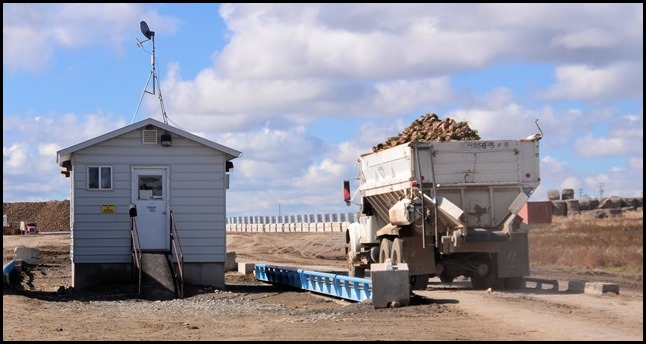
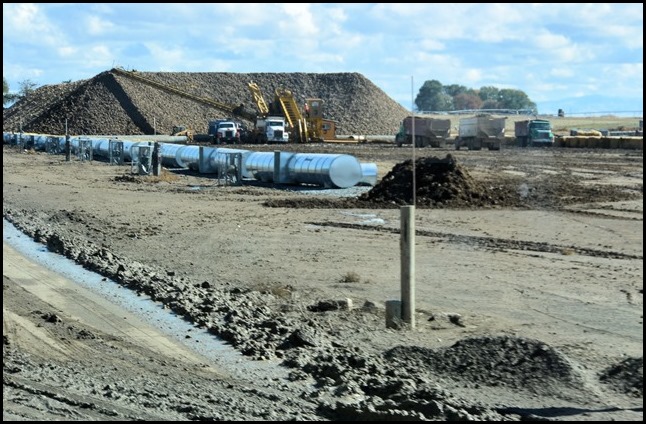
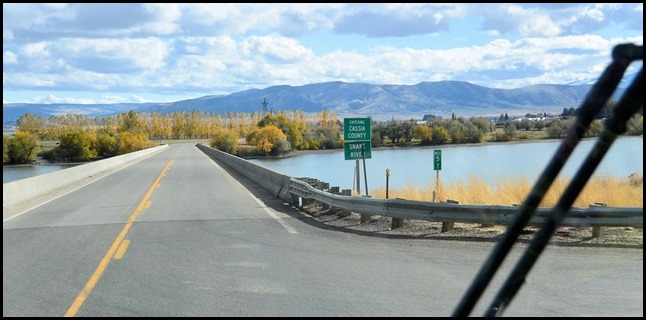
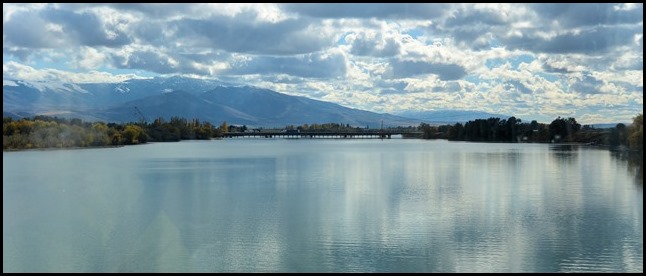
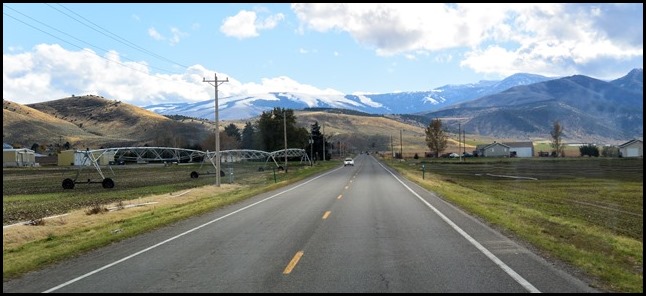
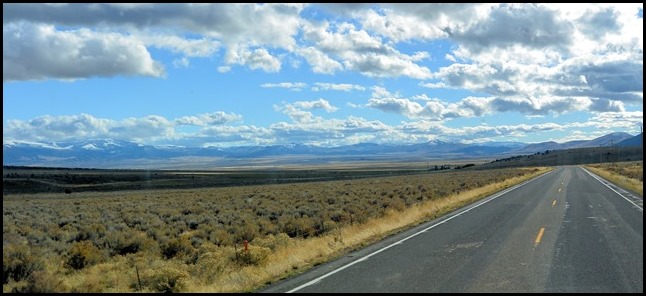
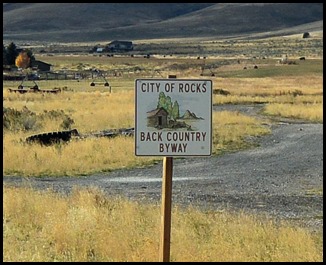
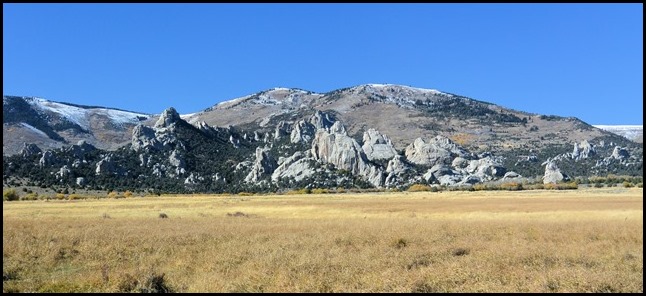
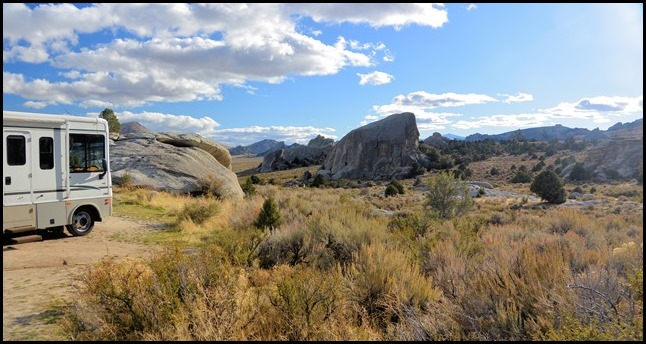
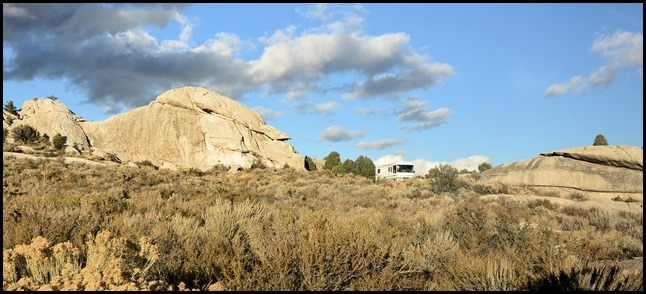
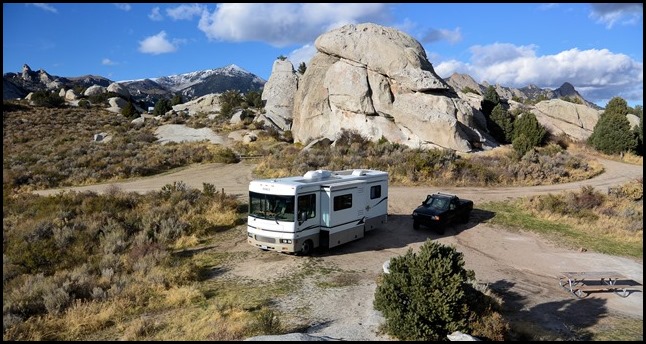
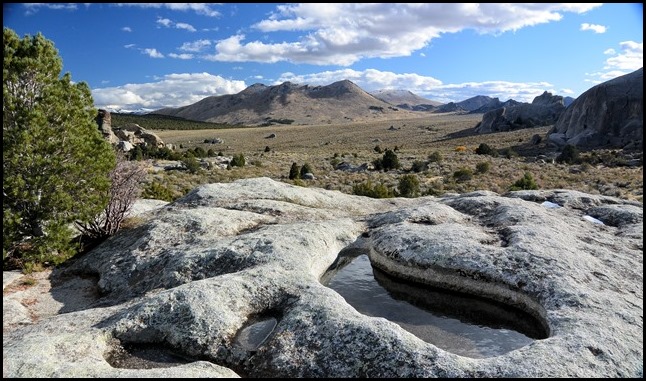

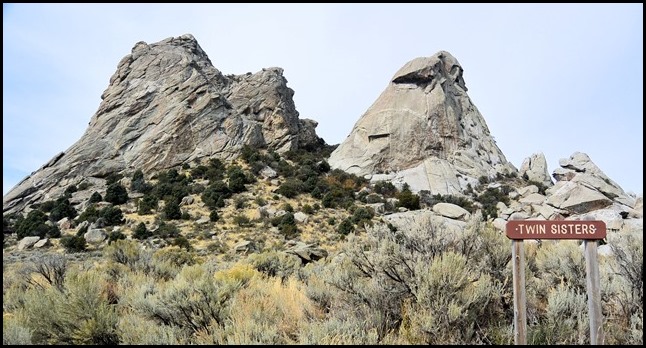
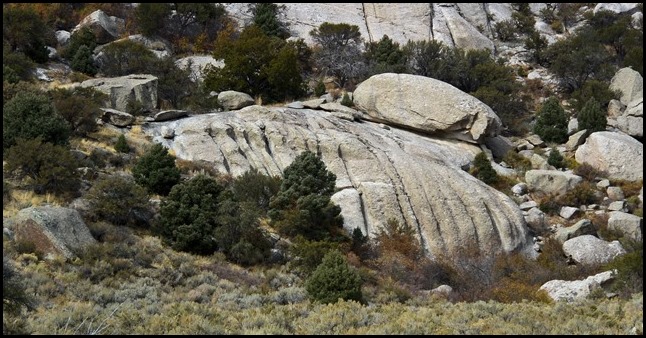
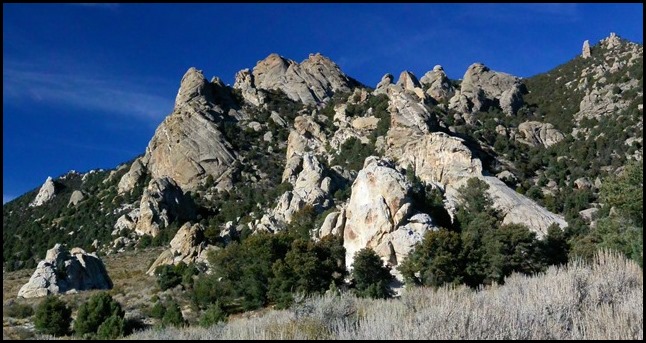
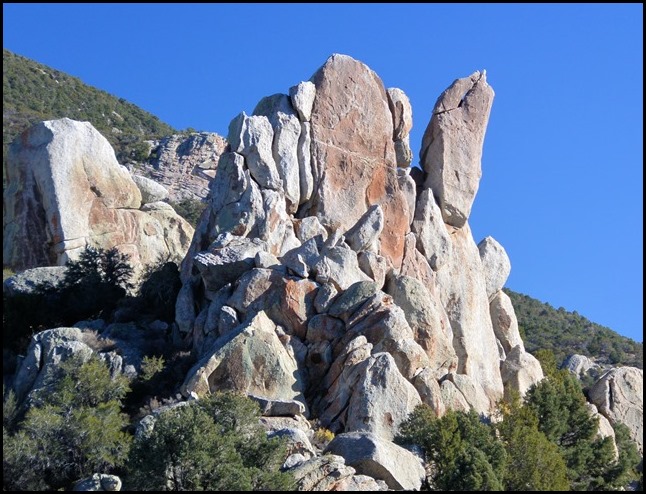
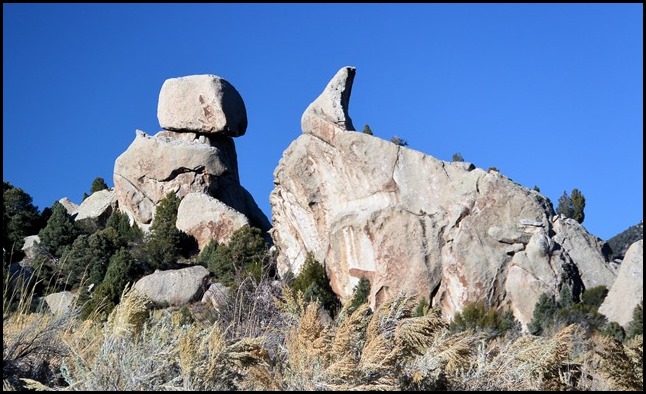
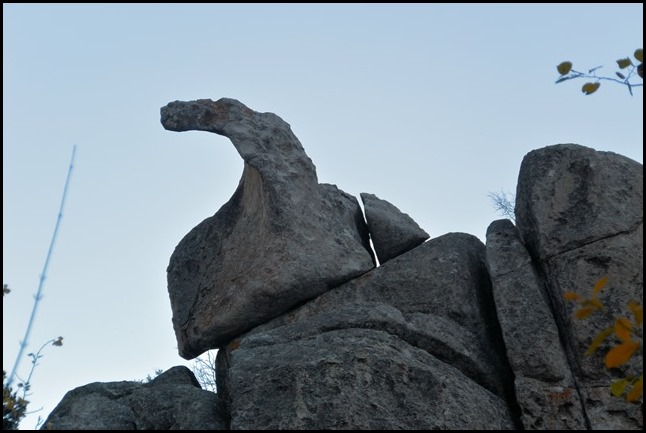
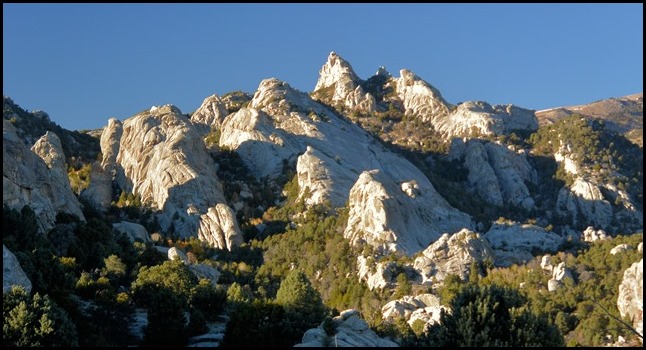
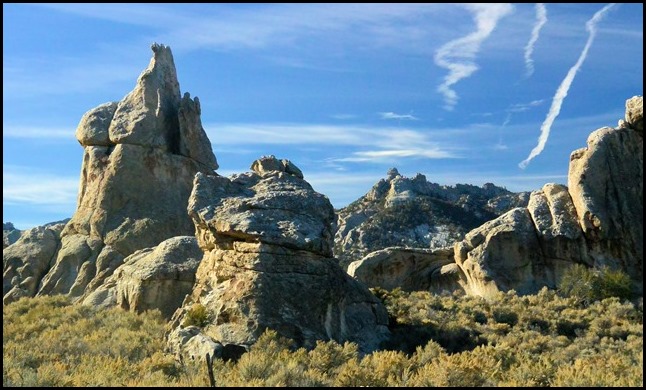
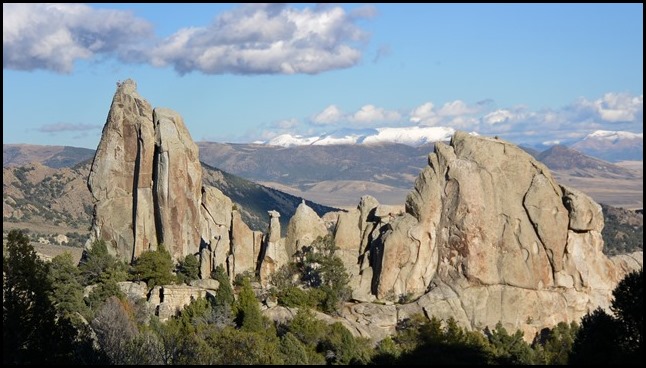
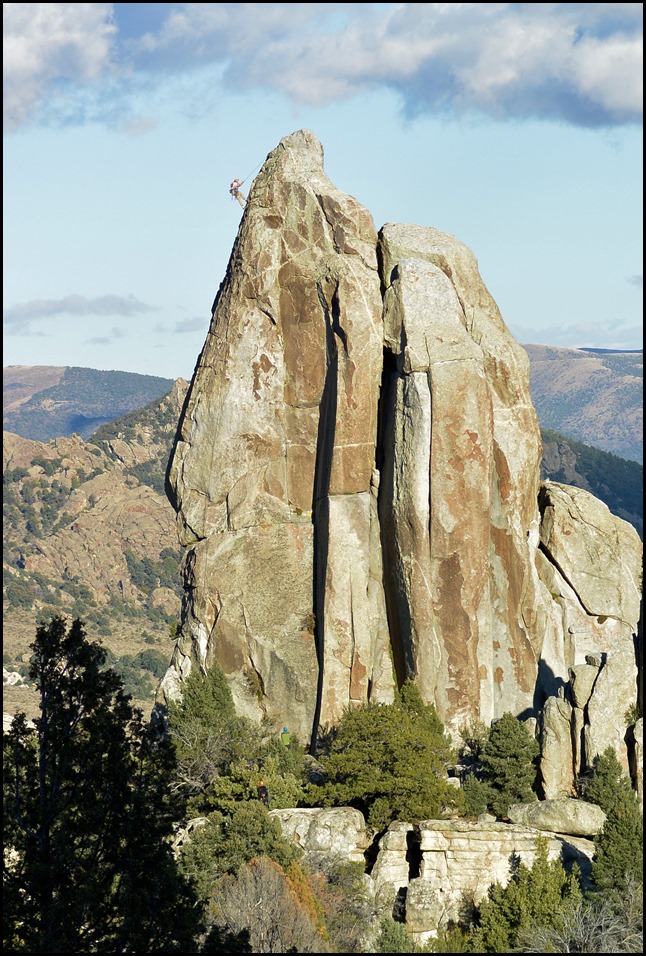
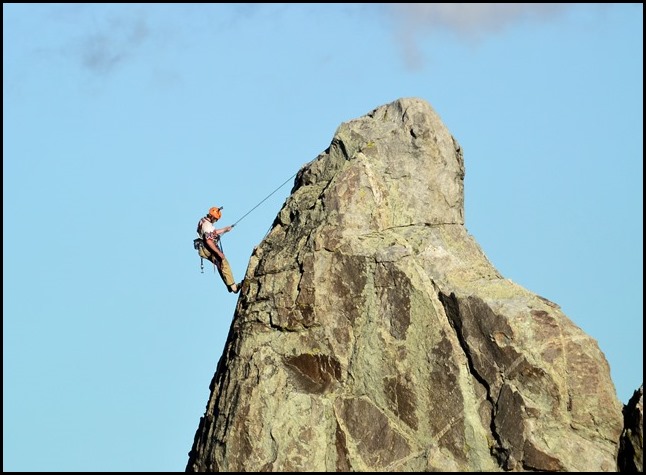
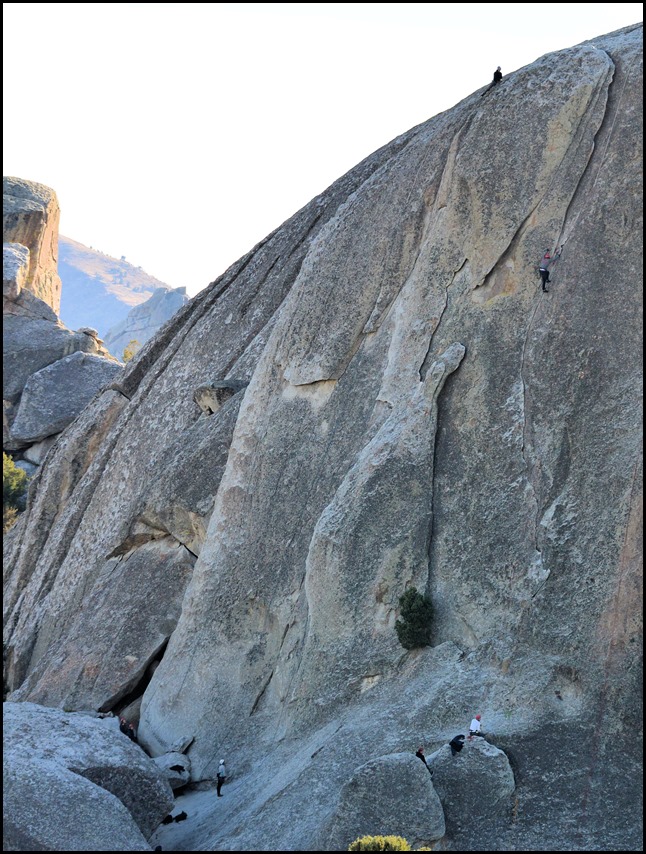
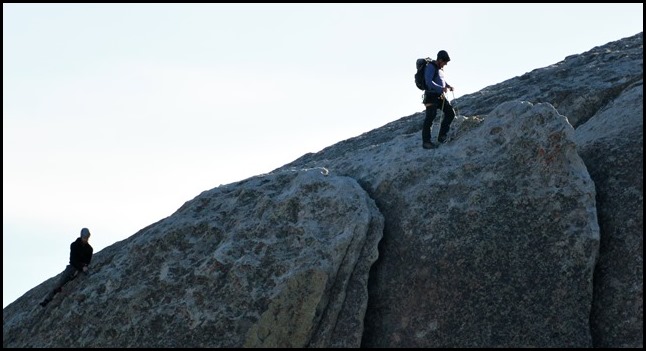
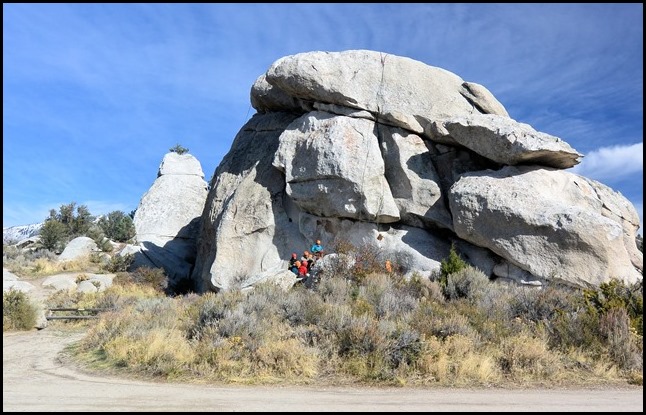
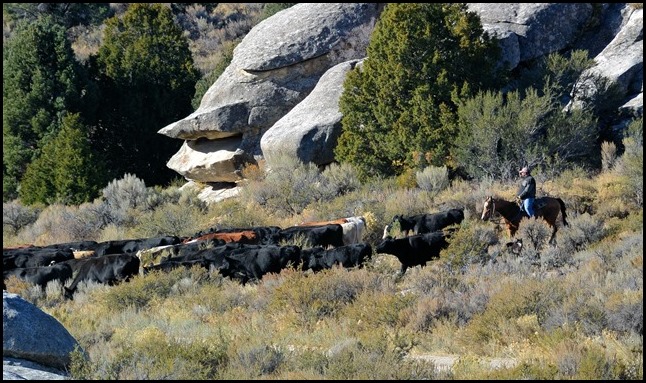
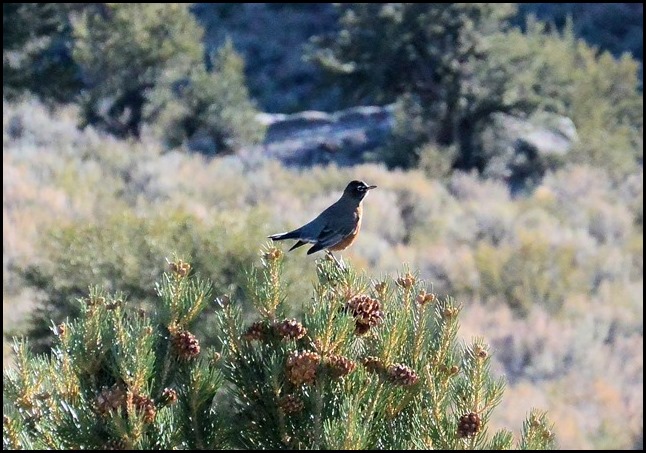
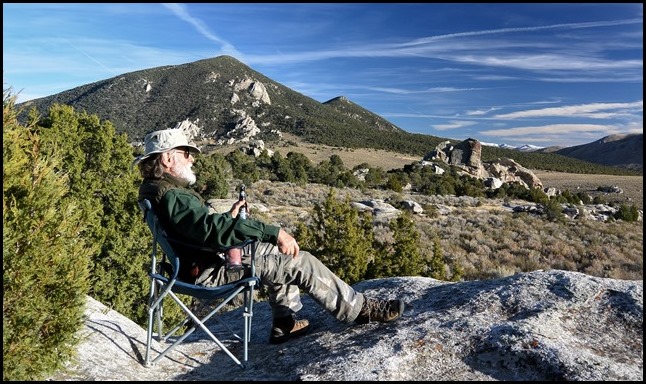
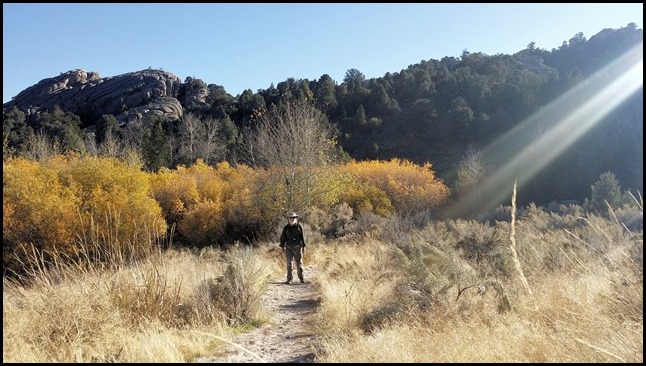
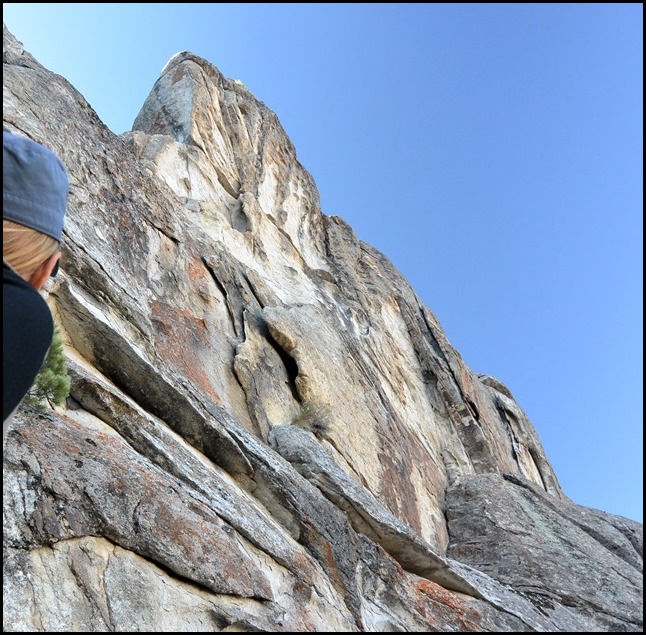
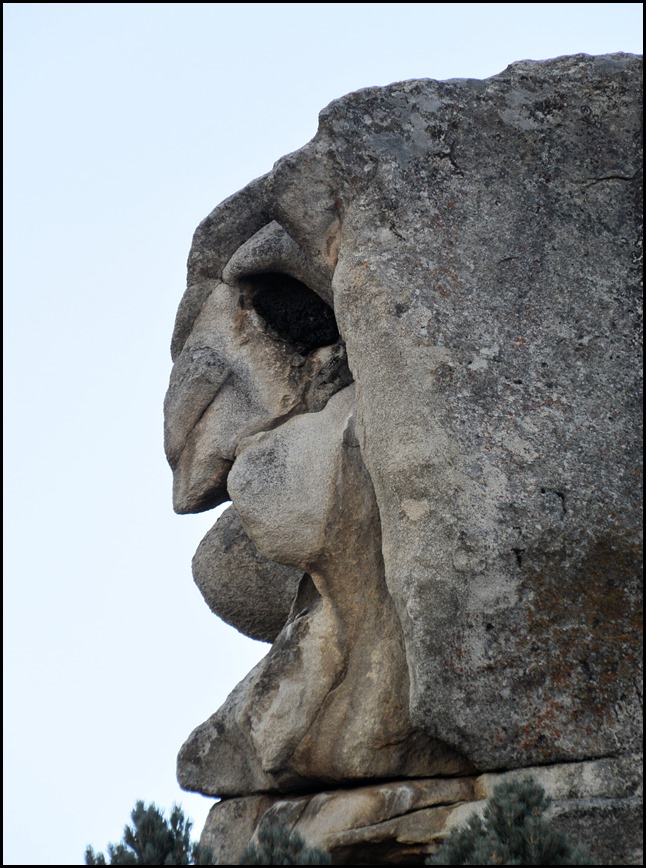
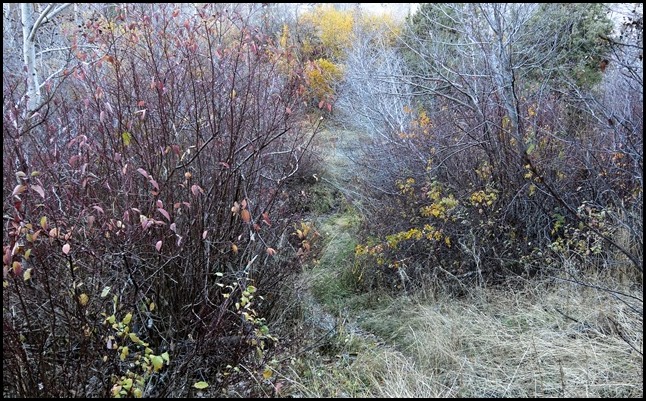
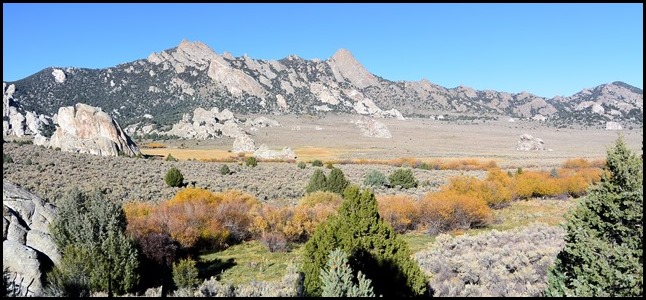
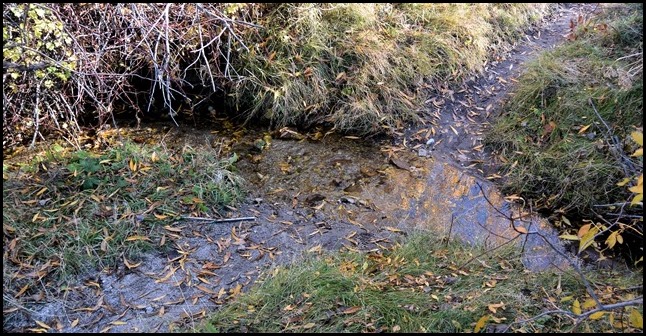
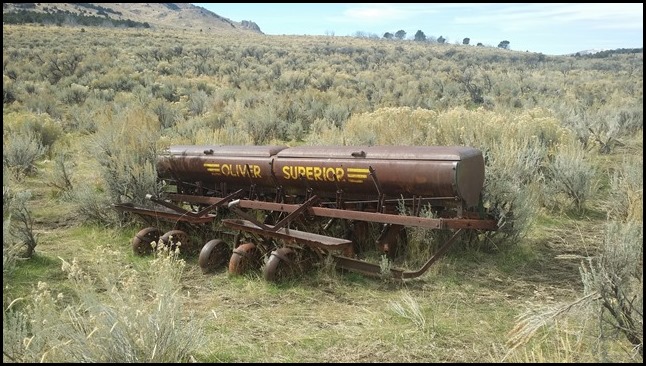
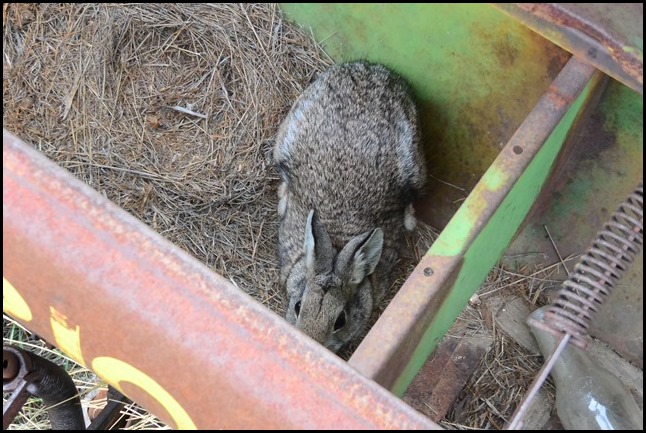
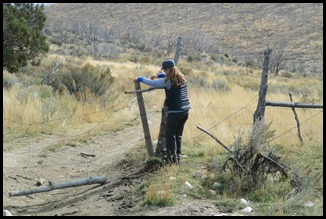
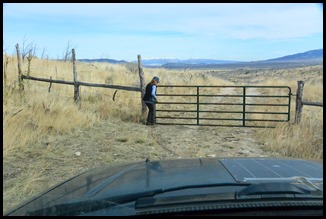
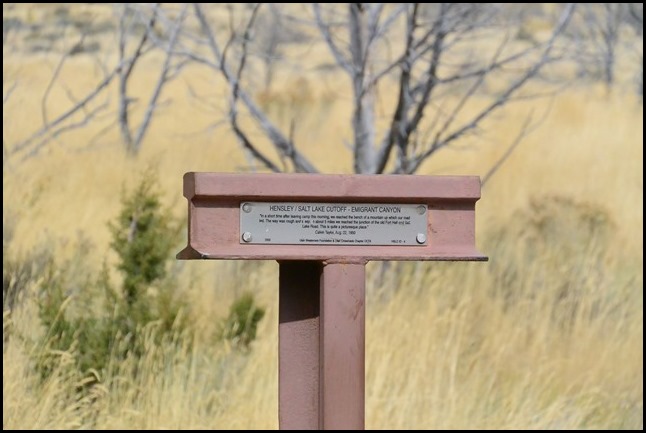
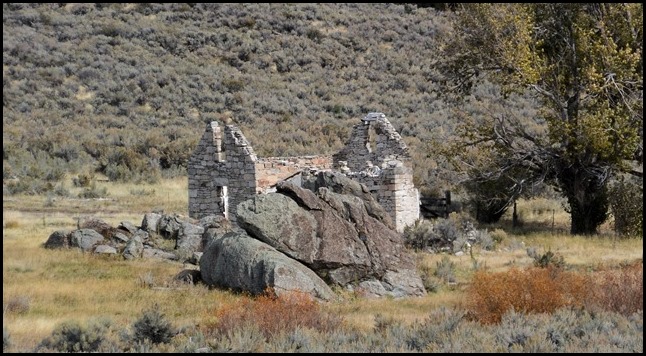
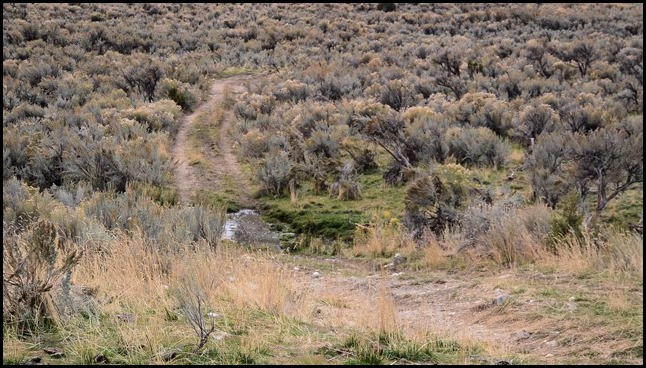
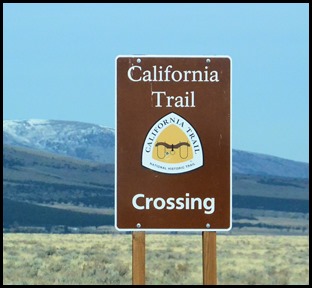
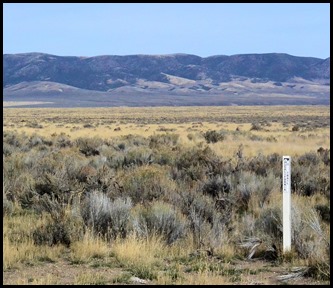
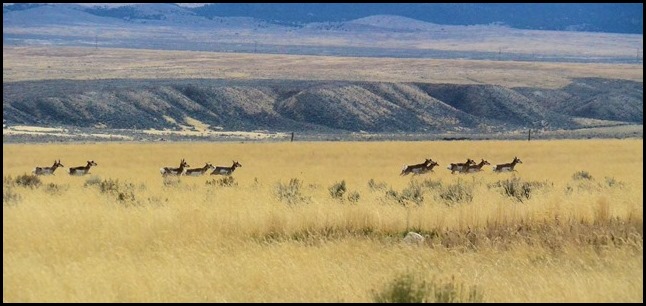
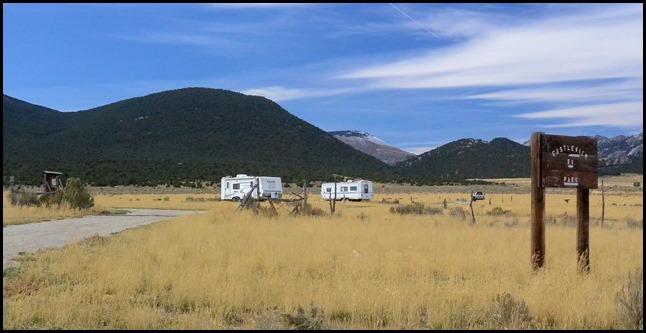
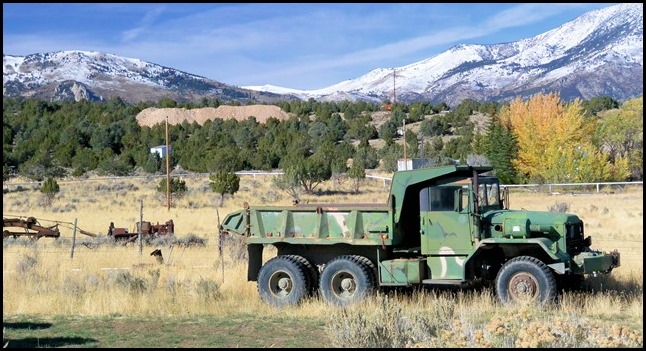
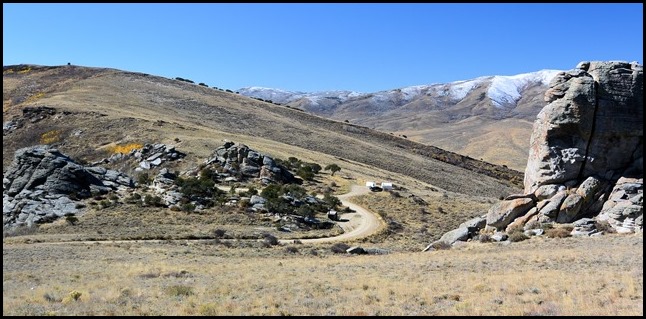
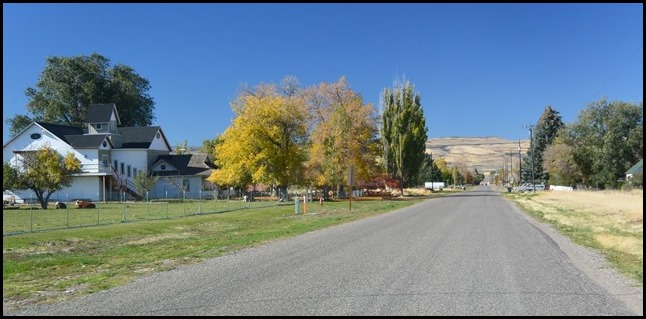
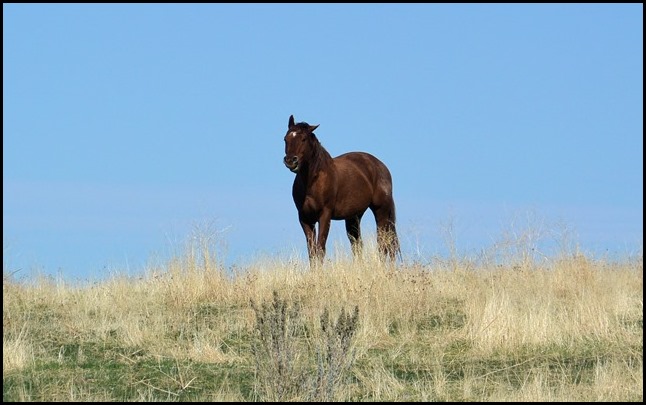
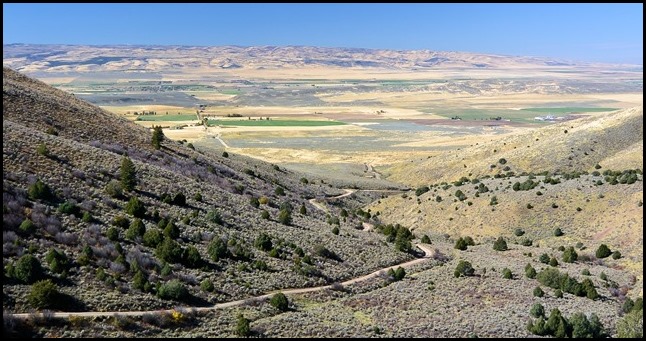
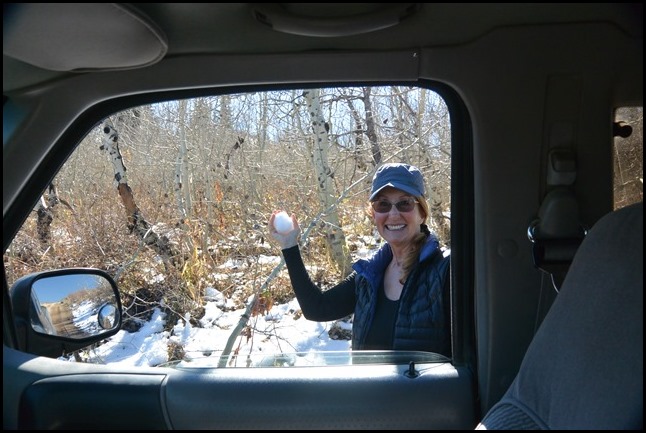
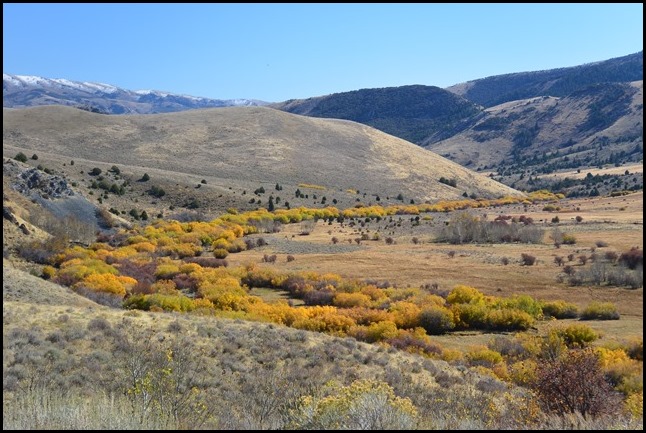
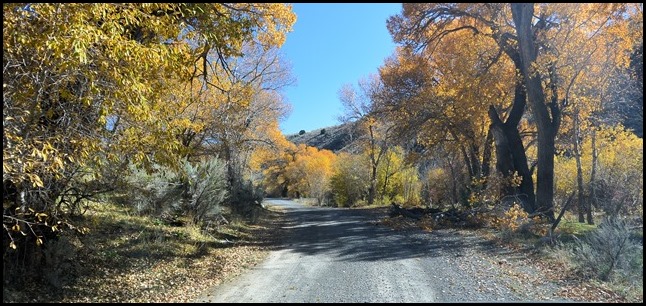
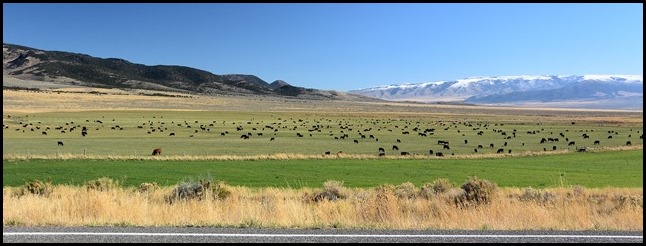
A fabulous article, Greg. Thanks again, for all your effort to entertain and educate us all. We are currently in Prague,enjoying 5 weeks in northern Central Europe, but have not continued our Website. Your writings make me wish we did!
Stay safe, and continue to enjoy such wonderful travels through your beautiful country.
Your Aussie friends.
Hey E & J,
I’ll miss your (also excellent) posts. Maybe toss something up on Facebook? It’s really easy, no pain no strain.
have fun,
G.
Did she throw the snowball?
No, she didn’t throw the snowball. I think she was afraid of having to walk back.